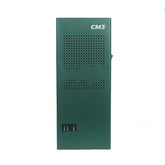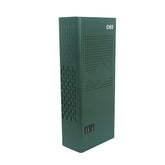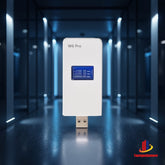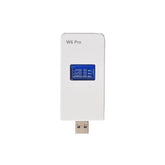Is it better to choose a directional antenna or an omnidirectional antenna for drone jamming equipment?
As an important safeguard against illegal drone intrusion, drone jamming equipment is undoubtedly the preferred equipment. However, various types of drone jamming equipment are emerging in an endless stream. The distinction and difference between them are not only in appearance, transmission power, signal interference distance, etc., but also in a particularly important classification basis: that is, the directionality of the jamming signal after it is emitted. Therefore, some customers often ask us questions: Is it better to choose a directional antenna or an omnidirectional antenna for drone signal blocker?
First, explain how to distinguish between directional antennas and omnidirectional antennas. Omnidirectional antennas are relatively simple and easy to identify. They are usually in the shape of a round tube or a round rod. In most cases, they are kept vertically to the ground and installed upright. The types of directional antennas are much more complicated than omnidirectional antennas, and the appearance of different directional antennas is also very different. There are roughly three types of directional antennas used in drone jamming equipment: the first type is the Yagi antenna, the second type is the logarithmic periodic antenna, and the third type is the flat directional antenna.
Regarding the question of whether to choose a directional antenna or an omnidirectional antenna for drone jamming equipment, the answer should be to understand the customer's needs and application environment in advance. For example, if the customer needs to carry out all-round drone defense for a very open place or a building with a very large area, then it is most suitable to choose an omnidirectional antenna for the drone jamming equipment. It does not need to pay special attention to which specific direction to guard against, but only needs to install the jamming equipment at a higher position in the defense area or on the roof of the tallest building.
If the customer needs a small and easy-to-carry drone signal jammer, such as a temporary defense site environment, or can detect the drone attack by visual observation, then you can choose a drone jamming device with a directional antenna. Because directional antennas can be made as small and lightweight as possible, directional antennas can also form an integrated structure with the host of the jamming device.
In addition to the above, there is another situation where a directional antenna can be configured for the drone jamming equipment. That is, if the customer has a drone detection and identification system, after early detection and early warning of the invading drone, the drone jamming equipment at the lower port can be intelligently linked and turned on, and the attack direction of the invading drone can be identified. At this time, the configured directional antenna can undoubtedly ensure the strike effect in the precise direction.














